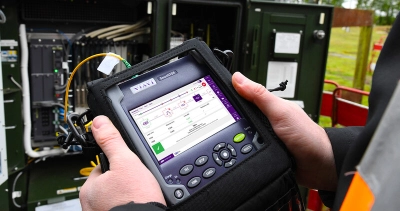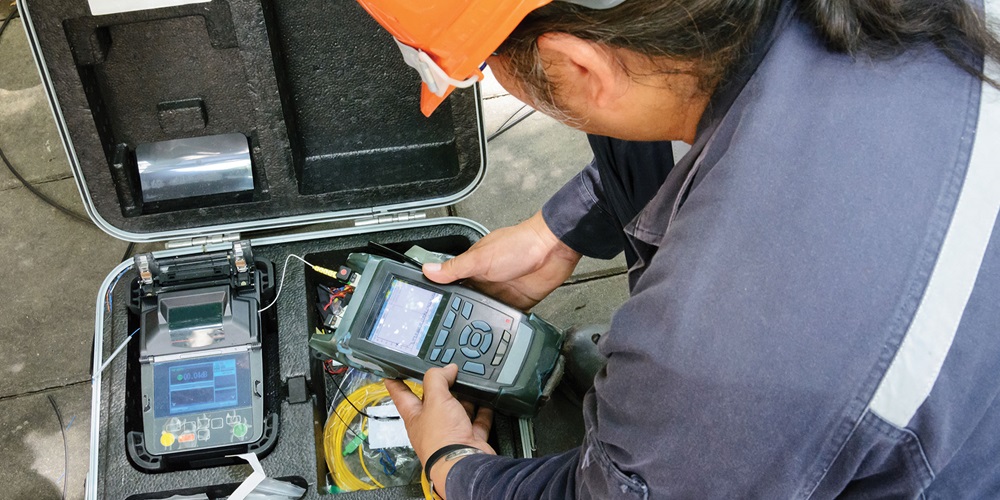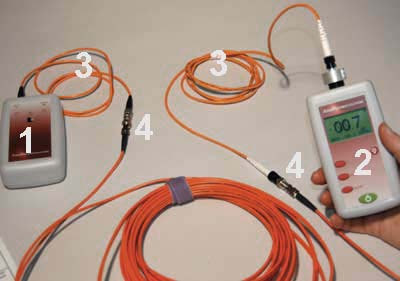High-tech fibre testing equipment detects defects and maintains fibre integrity.
Introducing the Key Use Optical Fibre Evaluating for Reliable Information Transmission
In the world of contemporary interaction, optical fibre screening emerges as a vital practice for optimizing information transmission. Comprehending the complex applications of optical fiber testing invites a much deeper exploration into its crucial duty in shaping the future of information communication.

Significance of Optical Fibre Screening
The value of optical fibre screening can not be overstated, as it functions as a crucial part in making certain the dependability and performance of information transmission systems. In an age where high-speed interaction is critical, any kind of deficiencies in fiber optics can cause significant data loss and decreased performance. For that reason, extensive testing protocols are vital to verify the honesty and performance of optical cables.
Examining permits the recognition of flaws such as micro-bends, macrobends, and splice losses that could impede signal top quality. In addition, it provides understandings right into the general depletion and data transfer abilities of the fiber, making certain that the network fulfills details functional requirements. Normal screening not only enhances system performance yet additionally extends the life expectancy of the facilities by identifying potential concerns prior to they intensify right into costly failings.

Kinds Of Optical Fiber Examinations
Different types of optical fibre examinations are carried out to ensure the efficiency and reliability of fibre optic networks. These examinations can be categorized right into numerous essential kinds, each serving a certain function in assessing the stability of the fiber.
First, Optical Time Domain Reflectometry (OTDR) is a popular examination that identifies faults, interlaces, and connectors within the fibre. By sending pulses of light and analyzing the shown signals, technicians can identify problems along the fiber's size.
Second, insertion loss tests examine the quantity of signal loss when light travel through ports or splices, which is essential for preserving network performance.
Third, return loss examinations measure the amount of light showed back in the direction of the resource, giving insights into the quality of links and prospective resources of interference.
Additionally, connection examinations make certain that the fibre course is total, enabling technicians to verify that the fiber is intact with no breaks. optical fibre diameter analyser.
Finally, visual fault locators make use of noticeable light to determine breaks or severe bends in the fibre, helping in quick troubleshooting. Jointly, these tests develop an extensive method to maintaining ideal efficiency in fibre optic networks.

Applications in Network Upkeep
In modern best site telecommunications, efficient network upkeep relies heavily on optical fibre screening to determine and correct issues without delay. Routine testing guarantees that the network operates at ideal efficiency degrees, reducing downtime and improving user experience.
Among the key applications of optical fibre screening in maintenance is the detection of mistakes, such as breaks, flexes, or improper links. Methods like Optical Time Domain Name Reflectometry (OTDR) allow professionals to locate these problems properly and examine the top quality of the fibre web link. In addition, loss screening validates the stability of the optical path, making sure that signal depletion stays within appropriate restrictions.
Routine upkeep testing likewise assists in safety nets, identifying prospective troubles prior to they intensify right into substantial failings. This positive method can conserve companies both time and economic resources. In addition, throughout upgrades or developments, optical fibre screening makes sure that brand-new setups incorporate effortlessly with existing facilities.
Enhancing Data Transmission Dependability
Effective network maintenance via optical fiber screening not just addresses instant concerns however additionally plays a significant duty in enhancing information transmission reliability. By identifying mistakes, determining signal loss, and assessing the general problem of fiber optic cords, testing makes certain that possible issues are fixed before they escalate into considerable interruptions.
Regular optical fiber screening, such as time-domain reflectometry (TDR) and optical time-domain reflectometry (OTDR), enables professionals to determine the precise locations of breaks, bends, or connector problems within the network. This positive approach not only lessens downtime however likewise optimizes the performance of data transmission by making sure that the pathways for signals are clear and working effectively.
Furthermore, screening help in verifying adherence to sector criteria and specs, which is vital for maintaining the honesty of data flow. By making certain that each link fulfills needed thresholds for loss and quality, companies can strengthen their confidence in the integrity of their data networks.
Eventually, buying comprehensive optical fiber testing not only enhances data transmission integrity yet likewise supports the lasting operational effectiveness of interaction frameworks.
Future Fads in Fibre Screening
Arising innovations are positioned to change fiber screening, leading the way for enhanced efficiency and accuracy in information transmission diagnostics (optical fibre testing equipment). As the demand for faster net and greater bandwidth remains to rise, the integration of sophisticated devices such as synthetic intelligence (AI) and artificial intelligence (ML) is established to change typical fiber testing approaches. These innovations will certainly enable anticipating upkeep and automated fault detection, substantially decreasing downtime and improving network integrity
Additionally, the adoption of Internet of Things (IoT) devices will assist in real-time tracking of fibre networks, enabling prompt recognition of efficiency issues. This shift in the direction of proactive monitoring find out here will decrease disturbances and enhance information circulation.
Furthermore, technologies in optical time-domain reflectometry (OTDR) and new screening click for more info requirements will improve the precision of measurements, guaranteeing that data integrity is maintained throughout the transmission process. The arrival of 5G innovation also requires the advancement of a lot more innovative fibre testing techniques to sustain its high-speed needs.
Verdict
In verdict, optical fiber screening is necessary for maintaining reliable data transmission within interaction networks. By using numerous screening strategies, such as OTDR and insertion loss tests, potential faults can be determined and fixed, therefore improving signal quality and lessening downtime. Normal testing not just makes certain conformity with sector requirements however likewise assists in aggressive upkeep, ultimately adding to the lasting dependability and performance of fiber optic systems. The ongoing evolution of screening techniques will further boost these capacities in the future.